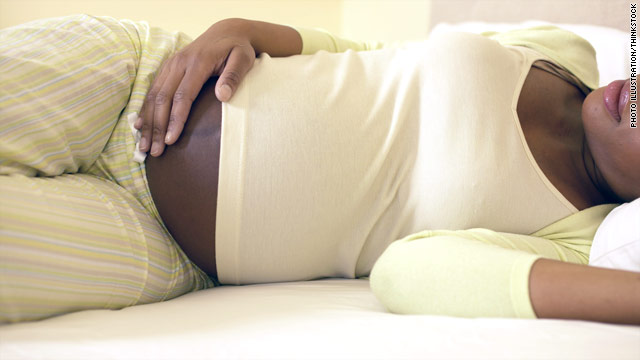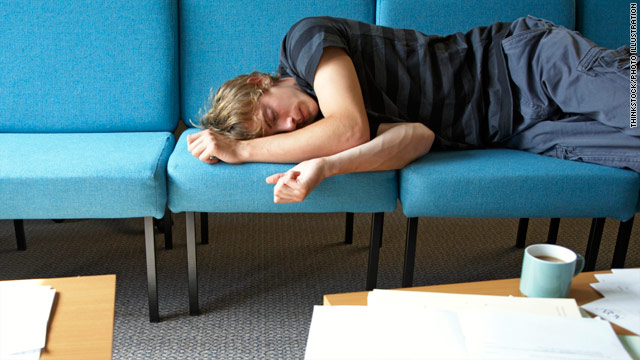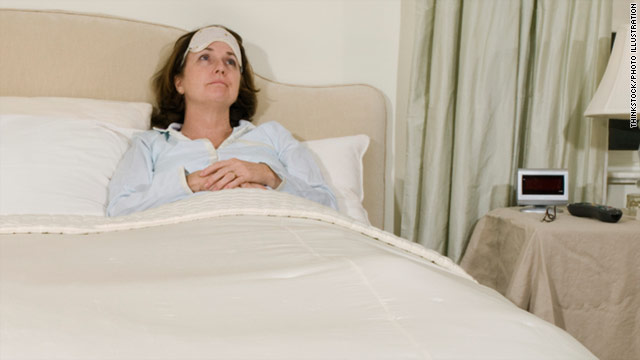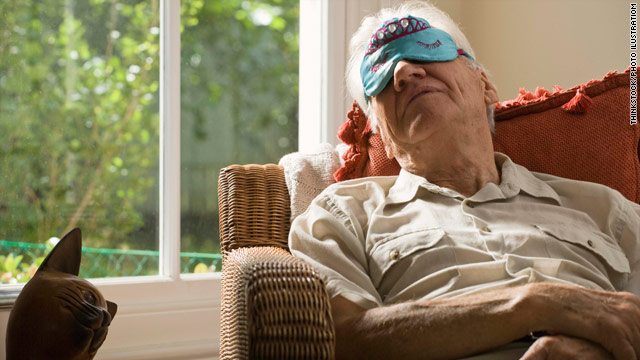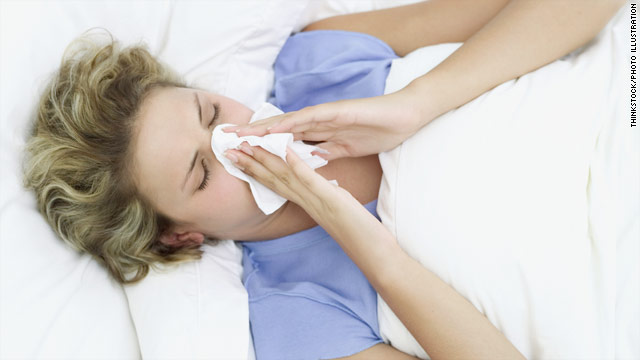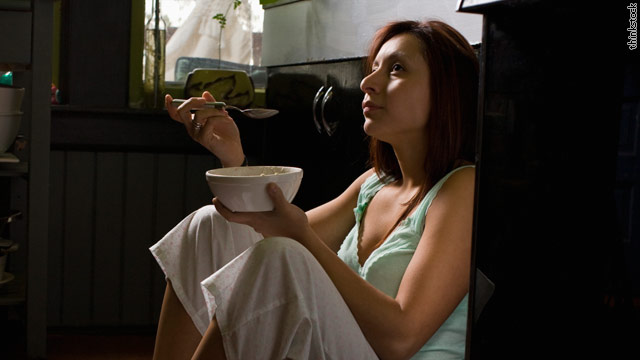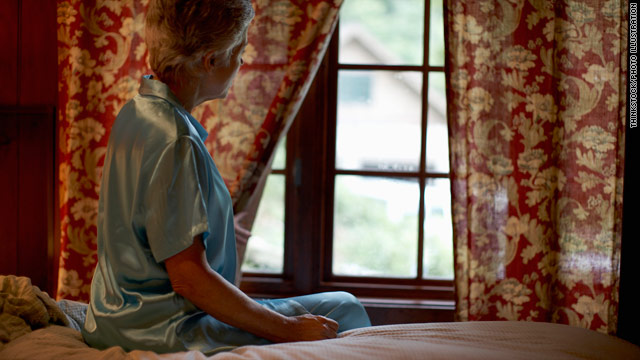Health Care
Sunday, June 12, 2011
Saturday, April 30, 2011
SLEEP
Get Some Sleep: Pregnant and tired Lisa Shives, M.D., is the founder of Northshore Sleep Medicine in Evanston, Illinois. She blogs on Tuesdays on The Chart. Read more from her at Dr.  Poor sleep is such a common complaint during pregnancy that probably many women and even their doctors think it's is a normal part of pregnancy. It is common for women to feel extreme sleepiness and fatigue in the first trimester, which is assumed to be secondary to rising progesterone levels because progesterone is known to have a hypnotic affect. Progesterone levels continue to rise throughout pregnancy yet in the second trimester most women report feeling more daytime alertness and they feel that their sleep quality is improved compared with the first trimester.While it is true that pregnancy has a significant impact on the quantity and quality of sleep, it is also true that many of the sleep problems that arise during pregnancy can be treated or ameliorated. The third trimester ushers in a host of problems that are mostly connected to the increased girth. During the later months, women often experience shortness of breath and reflux because their diaphragm is elevated, pressing on the lungs and the stomach. They also have to urinate frequently during the night. That alone is quite a disruption to sleep. These are normal problems encountered during pregnancy and there is not a lot a doctor can do about it. However, there are other sleep problems that represent the emergence of a bona fide sleep disorder and these can be treated. FULL POST
Teen 'sleeping sickness' is bizarre, rare Lisa Shives, M.D., is the founder of Northshore Sleep Medicine in Evanston, Illinois. She blogs on Tuesdays on The Chart. Read more from her at Dr.  A bizarre, but thankfully, rare disorder has received a lot of press in the past few months and one of my patients asked me about it this week worried that her son was sleeping too much and that he had “that sleeping sickness.” Kleine-Levin syndrome is marked by recurrent periods of excessive sleepiness during which the patient can sleep for 24-48 hours, getting up only to urinate and often to eat. In fact, other than hypersomnia, that is, the excessive sleepiness with long sleep times, this disorder is characterized by compulsive eating, called megaphagia, hypersexuality, and almost all patients have cognitive and mood dysfunction. FULL POST
Get Some Sleep: Hormonal havoc, or menopause and your rest Lisa Shives, M.D., is the founder of Northshore Sleep Medicine in Evanston, Illinois. She blogs on Tuesdays on The Chart. Read more from her at Dr. .  The change of life affects so many aspects of a woman’s life. Our female sex hormones, estrogen and progesterone, decrease. That can cause the familiar symptoms of hot flashes, mood swings and memory lapses. And it can play havoc with women’s sleep. The change of life affects so many aspects of a woman’s life. Our female sex hormones, estrogen and progesterone, decrease. That can cause the familiar symptoms of hot flashes, mood swings and memory lapses. And it can play havoc with women’s sleep.Many of us begin to have sleep difficulties as we go through menopause. In fact, most studies show that 40 to 50 percent of women start to toss and turn as they age, often associated with hormone fluctuations. It’s true that it’s not always hormones. Women can have more than one problem with their sleep. The first thing to keep in mind is that once women go through menopause, they are just as likely as a man to develop obstructive sleep apnea. March 29th, 2011 10:55 AM ET Share Lisa Shives, M.D., is the founder of Northshore Sleep Medicine in Evanston, Illinois. She blogs on Tuesdays on The Chart. Read more from her at Dr. Lisa Shives’ Sleep Better Blog. Sleep medications are notoriously ineffective or cause dangerous side effects and dependency. Psychological therapies, much research reports, are as effective in the short term and more effective in the long run than hypnotic medications. Ten to 15% of Americans suffer from chronic insomnia, defined as the inability to get to sleep or stay asleep, or the inability to get refreshing sleep. Ten to 15% of Americans suffer from chronic insomnia, defined as the inability to get to sleep or stay asleep, or the inability to get refreshing sleep.Unfortunately, there are few providers of the cognitive behavioral therapies that have shown to help treat insomnia. The good news is that there is hope that alternative, non-pharmacologic approaches can improve sleep and daytime function. The term that we use for non-traditional, often non-Western approaches to healing is CAM, complementary and alternative medicine. A recent review by Sarris and Byrne published in Sleep Medicine Reviews, April 2011, looked at all the randomized, controlled trials published in English and scrutinized the studies for their methodologies and outcomes data. It turns out that there are some good data proving the efficacy of three CAM treatments: acupressure, yoga and tai chi. The evidence for acupuncture was mixed, as was the use of L-tryptophan, which is an essential amino acid that acts as a precursor to serotonin, which in turn can be converted to melatonin. The most studied herbal remedy, valerian, shows very weak evidence of improving sleep and cannot be recommended at this time. Melatonin studies were not included in this review but from my own recent review of the literature as well as my clinical experience, the effectiveness of melatonin as a hypnotic agent is very unpredictable. Some people find it extremely useful in getting to sleep and most find it does nothing at all. If you are going to try something like L-tryptophan or melatonin, one tip I have is to buy products manufactured in Germany, where a lot of research into phytomedicines has been conducted and where the production of these substances is overseen and regulated in much the same manner as pharmaceuticals. Therefore, you know that there is research showing that the substance is safe and effective, and you know that the bottle contains what it says it does in a pure form. Acupressure uses the same pressure points as acupuncture but instead of needles, it employs gentle pressure from the fingers, or sometimes the feet. You can even learn to do some of the pressure points on yourself. Both tai chi and yoga, as they are commonly practiced in the West, are slow, gentle forms of exercise that can benefit many chronic health conditions as well as help improve sleep quality and duration. The information contained on this page does not and is not intended to convey medical advice. CNN is not responsible for any actions or inaction on your part based on the information that is presented here. Please consult a physician or medical professional for personal medical advice or treatment.
March 22nd, 2011 10:02 AM ET Share Lisa Shives, M.D., is the founder of Northshore Sleep Medicine in Evanston, Illinois. She blogs on Tuesdays on The Chart. Read more from her at Dr. Lisa Shives’ Sleep Better Blog.  Charlie did not really want to come to the sleep doctor. “I sleep just fine,” he told me gruffly at our first consultation. Many studies show that approximately 50 percent of people over the age of 65 have complaints about their sleep, but this 75-year-old man declared that he was not one of them. However, his internal medicine doctor and his daughter had insisted that he have his sleep looked into. They felt that his memory had deteriorated over the past year and they wondered if he could have a sleep disorder that was robbing him of quality sleep and making him confused and forgetful in the daytime. He has always been a loud snorer, she reported, and, for years, his internist had wanted him evaluated for sleep apnea, but he refused to go for the sleep study. Now he was sleeping more and more in the daytime. And when he was awake he seemed “in a daze.” He was a widower who lived alone and he had stopped going out much because, as he did admit to me, he had “no energy.” He was going to see a neurologist who specialized in dementia, but his daughter was a nurse and knew very well that sleep disorders can result in significant cognitive impairment especially in older patients. “He just seems to be going downhill; he is either depressed, demented or chronically sleep deprived, or maybe it is a combination.” Indeed, such problems with mood and memory are often multi-factorial in elderly patients. In Charlie’s case, not only was he depressed and in the early stages of presumed Alzheimer’s disease, he also had multiple sleep problems that were only discovered after testing and getting to know him better. He did have very severe sleep apnea and surprisingly he did not resist the CPAP treatment and he acclimated very well to it. He seemed a bit brighter in the daytime, but he had also started a medication for Alzheimer’s disease and for depression, so it was hard to say what was helping him. After three months with CPAP, he did have a sleep complaint: “Doc, now I am waking up at 3 a.m. and I am wide awake and can’t go back to sleep.” Well it turns out that he has been going to bed at 7 p.m. for a long time, but when he had his sleep apnea and his depression treated, his sleep was such poor quality that he slept until seven a.m. and never thought to tell anyone he was sleeping for twelve hours. Now that his sleep and mood were much improved, he needed only eight to eight and a half hours sleep and he was waking up raring to go, but that was usually at 3 or 4 a.m. because he was still going to sleep at 7 p.m. usually in a chair in front of the television. So Charlie had a circadian rhythm disorder called advanced sleep phase syndrome whose signs and symptoms had been masked by the long sleep times associated with the other sleep disorder. People with advanced sleep phase disorder get very sleepy around 7 to 9 in the evening and want to go to bed. Their sleep is otherwise normal if they have no accompanying sleep disorders. The problem is most people don’t want to start their day at 3 or 4 a.m. This disorder is most common in older adults, but it can be caused by a genetic mutation and those people can display advanced sleep phase early in life. In older adults, there is a decrease in melatonin secretion and this may play role in circadian disturbances. There are always many studies that show that elderly people get much less bright light than younger people, and I have explained in many other blogs, light is the strongest Zeitgeber (time keeper in German) and provides the strongest stimulation to our wake-promoting neurons. Therefore, the first-line treatment for circadian rhythm disorders is bright light therapy sometimes accompanied by melatonin, but the timing of each of these therapies is critical. For Charlie, we had him turn all the lights on in his house at 7 p.m. and he kept them on until 9 p.m. His goal bedtime was now 10 p.m. I saw him one month after these recommendations and he was sleeping from approximately 10 p.m. until 6 or 6:30 a.m. He avoided bright light for an hour or so in the morning if he could. He did not need the addition of a commercial light box or melatonin. When I marveled at how easily he was able to change his schedule, he admitted other changes that helped him: “I do my exercises in the early evening now, and I eat dinner later, and when the bright lights go on I sit in a hardback wooden chair instead of my recliner.” This is not something I plan to recommend to all my patients, but it worked for him so who was I to dissuade him from his proven methods? The information contained on this page does not and is not intended to convey medical advice. CNN is not responsible for any actions or inaction on your part based on the information that is presented here. Please consult a physician or medical professional for personal medical advice or treatment.
Get Some Sleep: Getting good rest helps you stay well Lisa Shives, M.D., is the founder of Northshore Sleep Medicine in Evanston, Illinois. She blogs on Tuesdays on The Chart. Read more from her at Dr. Lisa Shives’ Sleep Better Blog.  Karen considered herself a normal, healthy, 30-something-year-old woman, but she had noticed that in the past two years or so she was always getting sick: colds, flues, sinus infections, GI bugs. “I never use to get sick, but now it seems like every other week, I am coming down with something.” We talked about what had changed in the past two years. The answer was: everything. She had finished law school and moved to Chicago to work for a large firm. She was working 60-80 hours per week, eating fast food, not exercising and sleeping only five to six hours per night.
Get Some Sleep: Do you eat in your sleep? Lisa Shives, M.D., is the founder of Northshore Sleep Medicine in Evanston, Illinois. She blogs on Tuesdays on The Chart. Read more from her at Dr. Lisa Shives’ Sleep Better Blog.  For Leslie, it all started around menopause: the fatigue, the weight gain and the eating in the middle of the night. Sometimes she would have absolutely no memory of getting up to eat, but would find a mess in the kitchen. Other times, she would feel half-awake but out of control and compelled to get out of bed and find food. I had a strong suspicion that Leslie had a parasomnia that we call sleep-related eating disorder. The key features are: 1. Nocturnal eating while asleep or half-asleep and therefore there is no or little recall of the events but there is evidence of eating or there are witnesses. 2. Bizarre and sometimes dangerous things are consumed. 3. Elaborate food preparation often takes place but in a careless, sloppy manner 4. There are often underlying eating disorders and/or a primary sleep disorder. As she continued her story, I became more convinced that indeed Leslie had this disorder.
CDC: 1 in 3 adults sleep less than 7 hours If you're not getting enough sleep and find yourself waking up tired on a daily basis, you're not alone. More than one-third of U.S. adults average less than 7 hours of sleep per night, according to a new report from the Centers for Disease Control and Prevention (CDC). That lack of sleep is causing problems during the daytime, CDC surveys found. In one survey, 38% of people said they'd unintentionally dozed off during the day at least once in the previous month. Even more alarming, 5% said they'd nodded off or had actually fallen asleep while driving."If you don't get enough sleep, it definitely impacts your functioning, your memory, response time. It definitely impacts your driving," says Lela McKnight-Eily, PhD, one of the authors of the report and an epidemiologist and clinical psychologist with the CDC's National Center for Chronic Disease Prevention and Heath Promotion. FULL POST
Get Some Sleep: Was your mom a sleepwalker? Lisa Shives, M.D., is the founder of Northshore Sleep Medicine in Evanston, Illinois. She blogs on Tuesdays on The Chart. Read more from her at Dr. Lisa Shives’ Sleep Better Blog.  I was at a conference in Aspen last week and on the chairlift a woman told me that this was her first time back skiing after breaking her pelvic bone. When I asked her how that happened, she said, “Sleepwalking.” Sleepwalking, like night terrors, is classified as a parasomnia, which is any unwanted movement or physical occurrence that happens during sleep or immediately upon awakening. It is much more common in childhood, with prevalence rates reported between 2 percent to 17 percent. The peak age is 8-12 years and it is thought that most kids will outgrow this. It does run in families and if a first degree relative experiences a parasomnia such as sleepwalking or night terrors, then a person is 10 times more likely to suffer from a similar parasomnia. FULL POST
Get Some Sleep: When people act out their dreams Lisa Shives, M.D., is the founder of Northshore Sleep Medicine in Evanston, Illinois. She blogs on Tuesdays on The Chart. Read more from her at Dr. Lisa Shives’ Sleep Better Blog.  The second time Charlie was awakened by his wife’s screams because he was slapping her in his sleep, he decided to move into the guest bedroom. The third time he hurled himself from his bed and put a big gash in his forehead, he decided to come to the sleep center. The second time Charlie was awakened by his wife’s screams because he was slapping her in his sleep, he decided to move into the guest bedroom. The third time he hurled himself from his bed and put a big gash in his forehead, he decided to come to the sleep center.Charlie has REM behavior disorder, or RBD. For each violent episode, he could recall the dream that he was having that prompted him to action. It is very common, and was true in this case, that when the person with RBD attacks his bed partner, usually he is dreaming that he is saving his spouse. In the dream, it is the bad guy he is hitting. RBD occurs when people are able to act out their dreams or usually their nightmares. Most of us are not able to do this because in REM sleep, which is where we have our vivid dreams, our muscles are very relaxed, almost paralyzed. If we reason backwards from what happens in RBD, we see that this is a self-protection mechanism so that we don’t throw ourselves off a cliff fighting the saber tooth tiger. | ||||||||||||||||||
Skinny Chicken Salad Recipes
Simple salads
These crisp and cool salads have a refreshing combination of ingredients to satisfy your taste buds while giving you the nutrition you need. Dig your fork into one of these 9 low-cal, main dish salads. Curried Chicken Salad
Turn leftover chicken into a zesty part of the simple salad. Combining curry powder and fat-free yogurt upgrades a boring salad to a spicy, tangy bowl of greens.
Ingredients: Fat-free yogurt, grapes, curry powder, salt, walnuts, lettuce, chicken
Calories: 238 (approximate)
A Skinny Caesar
This dish tastes exactly like your favorite Caesar salad, but it contains only half the fat of traditional versions. How? The dressing uses silken tofu instead of mayo, to make a lighter, leaner topping for your salad.Ingredients: Olive oil cooking spray, chicken breast, salt, pepper, silken soft tofu, lemons, extra_virgin olive oil, Dijon mustard, red wine vinegar, Worcestershire sauce, garlic, anchovy paste, fresh Parmesan cheese, romaine lettuce, fat-free croutons
Calories: 269
Grilled Chicken and Wheat-Berry Salad
Boost your intake of whole grains by digging into this hearty salad. You’ll get plenty of fiber, plus vitamins A and C.Ingredients: Winter wheat berries, bay leaf, spinach leaves, green apples, red bell peppers, Dijon mustard, chicken breasts, salt, pepper, cooking spray, green onions, Cucumber Yogurt Dressing
Calories: 332
Grilled Chicken Salad With Avocado and Mango
Fresh and full of flavor, this salad brings together your favorite tastes of summer. Plus the mango chutney adds a spicy-sweet kick to each mouthful. Serve with a crusty baguette for a low-cal summer dinner.Ingredients: Olive oil, limes, mango chutney, low-sodium soy sauce, fresh ginger, chicken breast, cooking spray, salad greens, mango, avocado
Calories: 185
What the Yuck: Does blotting pizza save calories?
Too embarrassed to ask your doctor about sex, body quirks, or the latest celeb health fad? In a regular feature and a new book, "What the Yuck?!," Health magazine medical editor Dr. Roshini Raj tackles your most personal and provocative questions. Send 'em to Dr. Raj at whattheyuck@health.com.
You are probably cutting 20 to 50 calories a piece - not a whole lot, but I guess if you have a couple of slices, it adds up. So if it makes you feel better, go for it.
Other ways to skinny up your pie: Ask the pizza guy to cut it into 10 or even 12 slices (each piece will have fewer calories and less fat), and start with a salad so you aren't famished by the time you open up that box. Also, order whole wheat or thin crust, avoid fatty toppings like sausage or pepperoni, and go for veggies like peppers or mushrooms instead. And, of course, if you skip the cheese, you'll cut out a whole lot of calories and saturated fat.
But call me old-fashioned: It's just not pizza without any cheese.
Subscribe to:
Posts (Atom)
